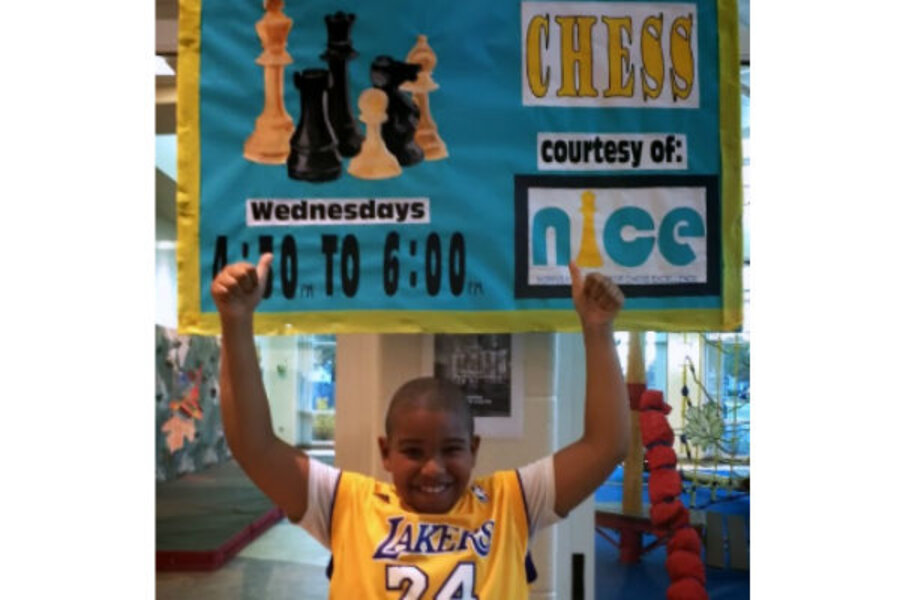Harvard obesity study: Low-income kids more at-risk
Loading...
A new Harvard University study shows that richer teens are thinner than lower-income teens due to better access to exercise and recreation programs. The study reports that teens from lower-income families exercise less and are effected by less-educated parenting decisions. Still, there are parents working hard to create affordable opportunities for their kids and communities.
“Increasing Socioeconomic Disparities in Adolescent Obesity” was published this week in the Proceedings of the National Academy of Sciences.
It reports, “Obesity rates have fallen among children of educated parents but has continued to rise among children of less wealthy, less educated parents.”
According to the study, “Low-income neighborhoods have fewer playgrounds, sidewalks, and recreational facilities. Participation in high school sports and clubs has increased among high SES (socioeconomic status) adolescents while decreasing among their low SES peers.”
To add to this challenge, other studies report that the rising cost of after-school clubs and activities could be another reason low income children miss out.
I am thankful that here in Norfolk, Va., where we live, not only do we have some wonderful recreational facilities, but they are also affordable. Membership is only $50 a year for a family of four, which allows a family to use any rec center in the city. These same centers are free for those over age 65.
Growing economic disparity is one of the root causes of childhood obesity, especially as it pertains to the inability to afford participation in a team sport, or an after-school activity that engages kids in something other than snacking in front of the TV or a video game.
Yet, despite the Harvard study and others, I do see exceptional programs developing that are keeping kids active and healthy.
In Norfolk, the Lambert's Point Community Center is an example of community-inspired, open-to-all neighborhood gathering place that supports families of all backgrounds with sports and recreational groups.
In August of 2011, the Lambert's Point Community Center In Norfolk joined other centers nationwide to encourage kids to learn and perform group dance routines in unison to Beyonce’s song “Move.”
At that time, Ellen Pryor Harvey, then 88, led the Lambert's Point children each and every day as they learned the routine. While Mrs. Harvey died last fall at age 90, the kids still do the dance workout in her memory, because she was a remarkable woman who knew the value of getting kids moving in the right direction.
It was a magical thing to see, and it would never have happened if a community superstar like Harvey hadn’t decided to encourage kids and families to get a move on, in addition to the broader community supporting a free fitness program for kids.
The Lambert's Point Community Center is fairly new, and one of many Norfolk has developed in order to serve the entire community, not just the affluent residents. The city built the community center in the lower-income Lambert's Point neighborhood because Harvey, active in her local civic league since 1983, got her neighbors to make a lot of noise to make sure the local children were served.
Now without Harvey, the low-income sector here needs to turn to new champions, while too many communities have no one stepping up to the plate for kids who need both indoor and outdoor recreation facilities in order to be fit and healthy.
According to the Harvard study, “One in five kids from less educated, poor families report not having exercised or having played sports for at least 20 minutes sometime in the last seven days. By contrast, only one in ten kids with college educated parents report similar levels of physical inactivity."
Because sports clubs are so expensive, a group of parents at Lambert's Point also created affordable sporting opportunities via The Fast & Furious Track Club established in 2011, by Lerenzo and Neshell Nicole Leavelle, Monique Francis, and Tawanna Hardy.
“The purpose of The Fast & Furious Track Club is to educate and train young athletes in the sport of Track and Field, competitive excellence, personal accomplishment and good sportsmanship; to support and develop athletes for Amateur Athletic Union regional and national competition; and to give youth an alternative to delinquency and organized gangs,” according to the group's page on Facebook.
I met the Leavelle family through its extraordinary children: Deja, 16, Je-Da, 10, and twins Kadejah and Kalil, 7, when I started a free chess program at the Lambert's Point Community Center shortly after it was opened by the Norfolk Department of Recreation, Parks & Open Space in 2009.
I have spent the better part of the past six years as a volunteer teaching chess to kids in Title 1 schools and in the Lambert's Point Community Center.
Thankfully, families such as the Leavelle's prove there are exceptions to study findings, as the children serve as role models for every activity they take part in, from being strong team athletes, to honor-roll students, and great chess players, too.
Sadly, the Leavelle family's struggles also drive home the Harvard study’s point about how the economy affects the availability of affordable programs. I just learned that Mr. Leavelle lost his job last year and he and his wife were forced to shut down the track club as they race to make ends meet. He lost his job and, as a result, the entire community lost its only affordable track and field program.
In order to continue a trend in stopping obesity among low-income kids, we need to support more centers like Lambert's Point around the nation, serving communities in need, led by community leaders like Harvey and the Leavelle family who drive change from within.






